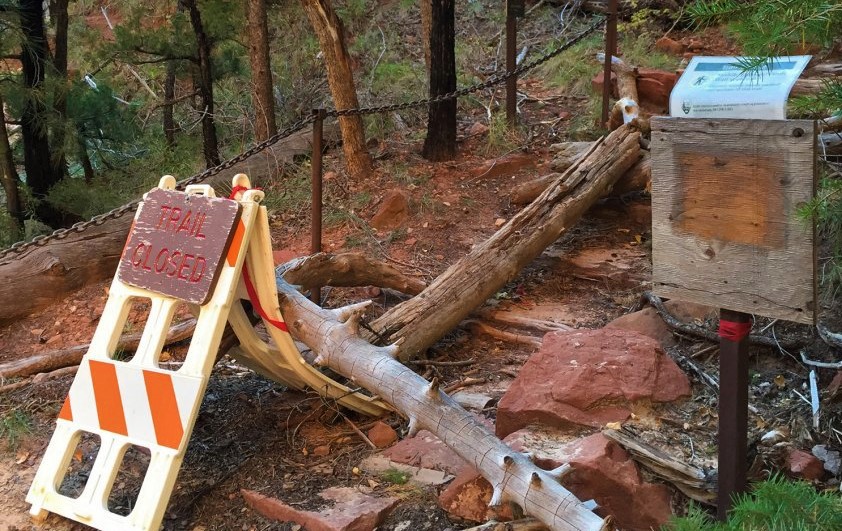“Decades of inaction have gotten us to this point. But the Trump Administration has proposed a solution,” Bernhardt said. The Trump administration’s 2019 budget plan called for creating Public Lands Infrastructure Fund (PLIF) to use revenues from onshore and offshore energy leases to whittle away at the maintenance backlog.
Michael Bastasch
•The most iconic U.S. national parks need billions of dollars in maintenance, according to experts and federal data.
•Nearly $12 billion is needed to repair park infrastructure, mostly crumbling roads, but also leaky drinking and wastewater pipes.
•“Roads are crumbling, bridges aren’t in great shape,” said one expert who also personally saw “incredibly dilapidated employee housing” at one park.
The most iconic U.S. national parks need billions of dollars in maintenance to repair crumbling roads, dilapidated buildings, rundown campsites and leaky pipelines, according to experts and federal government figures.
Nearly $12 billion is needed to repair infrastructure, mostly crumbling roads, at 419 park units managed by the National Park Service (NPS). The maintenance backlog grew $313 million in 2018 alone, federal figures state.
“It’s a problem that cannot continue indefinitely,” John Garder, a senior director at the National Parks Conservation Association, told The Daily Caller News Foundation in an interview.
The Interior Department has been grappling with its growing deferred maintenance backlog for years even as millions of people visit national parks every year. Park advocates worry the growing need for repairs could not only ruin a visitor’s experience but also damage natural habitats.
“Roads are crumbling, bridges aren’t in great shape,” said Shawn Regan, a research fellow at the Montana-based Property and Environment Research Center (PERC).
Regan told TheDCNF he’d personally seen “incredibly dilapidated employee housing” at NPS-managed lands. (RELATED: US Reliance On OPEC Oil Hits 30-Year Low)
Road repairs make up most of NPS’s deferred maintenance backlog, according to a recent PERC report. But eroded trails, leaky roofs, old buildings and water pipes are also in need of billions of dollars worth of repairs.
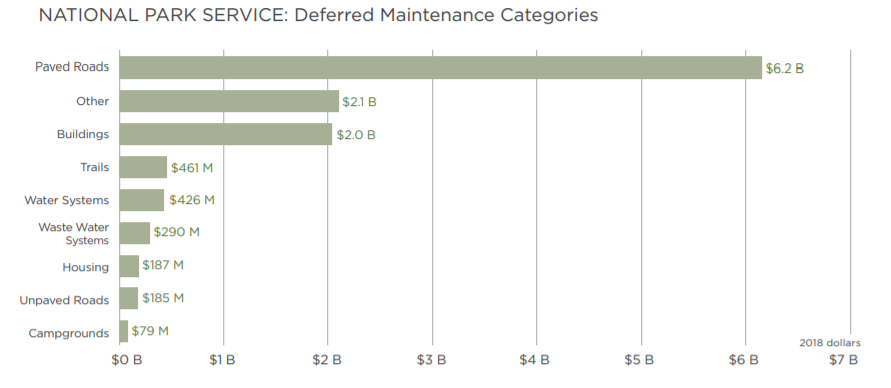
Source: Property and Environment Research Center
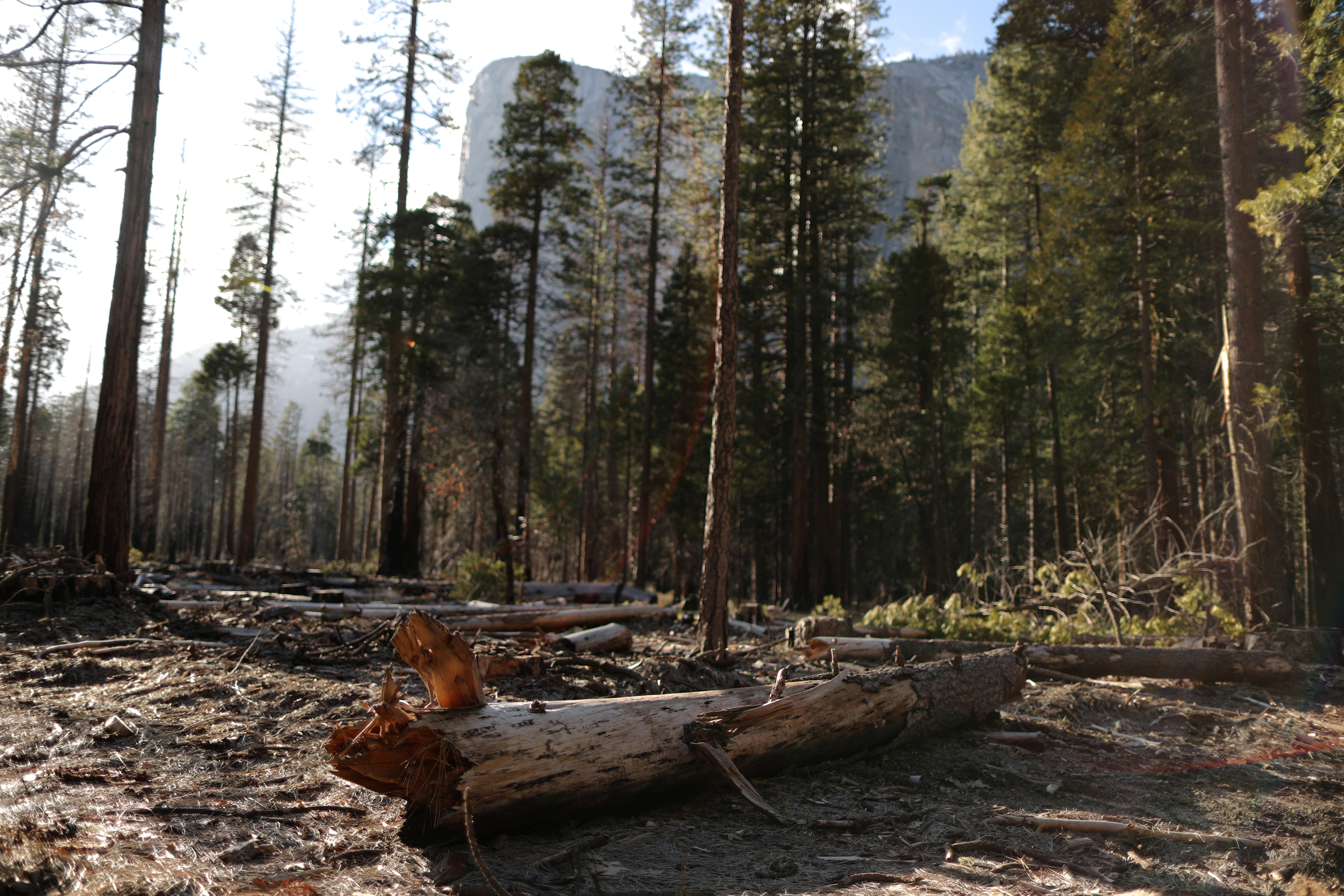
A dead tree is seen in Yosemite National Park, California, U.S., March 29, 2019. Picture taken March 29, 2019. REUTERS/Lucy Nicholson.
Congress allowed the backlog to get out of hand, Regan said, by focusing on acquiring new park lands over appropriating enough money to pay for what the Interior Department already managed.
“It’s more politically-appealing to open a new park than fix a leaky wastewater system,” Regan said. “Congress has prioritized the acquisition of new parks over the maintenance of existing parks.”
Wastewater pipelines are also an issue. In one instance, leaky pipes released chlorinated water into Yosemite’s Mariposa Grove, home to giant sequoia trees, Garder said.
NPS fixed the problem, but there are “plenty of documented cases in places like Yellowstone and Yosemite of wastewater leaking into rivers and streams,” Regan said.
Yosemite’s maintenance backlog topped $645 million in 2018, according to NPS figures. Roughly $80 million of that backlog is for repairs needed at water treatment plants that NPCA fears could spill sewage into nearby rivers if left in disrepair.
For years, Grand Canyon National Park has struggled with drinking water pipelines. The Canyon’s south rim faced severe water restrictions after water pipeline breaks last year, and NPS only recently fixed a pipeline that supplies drinking water to the north rim.
The park faces more than $313 million in deferred maintenance, according to NPS. Other park units in Arizona are in need of nearly $200 million worth of repairs.
It’s a similar story for park units across the country. California faces $1.8 billion in deferred maintenance, Colorado needs $247 million in repairs and D.C. parks face $1.2 billion in repairs, including $393 million for the National Mall, NPS reported. South Dakota’s Mount Rushmore has a $14 million backlog.

Source: Property and Environment Research Center
“The longer you let these problems go the more costly they become,” Garder said.
The maintenance backlog goes beyond just NPS-managed lands. In total, the Interior Department faces $18 billion in deferred maintenance when lands managed by the Bureau of Land Management, U.S. Fish and Wildlife Service and other agencies are factored in.
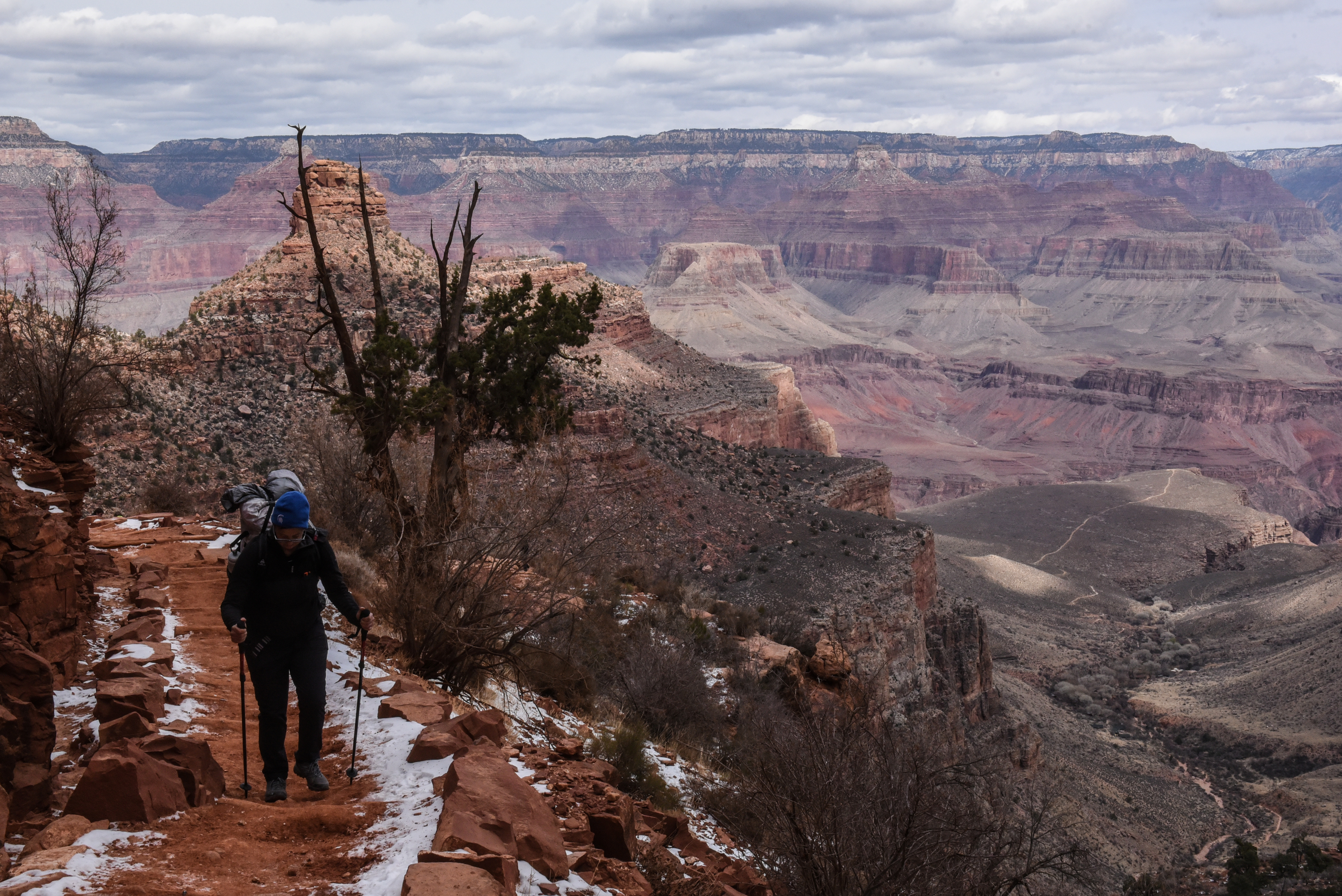
A person hikes on the Bright Angel Trail in the Grand Canyon near Grand Canyon Village, Arizona, U.S., February 22, 2018. REUTERS/Stephanie Keith.
A Bipartisan Solution?
“Right behind us, the boardwalk around Old Faithful is in need of repair so that the thousands of visitors every day can enjoy the world famous geyser,” Interior Secretary David Bernhardt told an audience at Yellowstone National Park on Thursday.
Bernhardt, who was confirmed by the Senate in April, joined Vice President Mike Pence at Yellowstone, one of the most iconic U.S. national parks. Yellowstone has a $585 million deferred maintenance backlog.
“Decades of inaction have gotten us to this point. But the Trump Administration has proposed a solution,” Bernhardt said.
The Trump administration’s 2019 budget plan called for creating Public Lands Infrastructure Fund (PLIF) to use revenues from onshore and offshore energy leases to whittle away at the maintenance backlog.
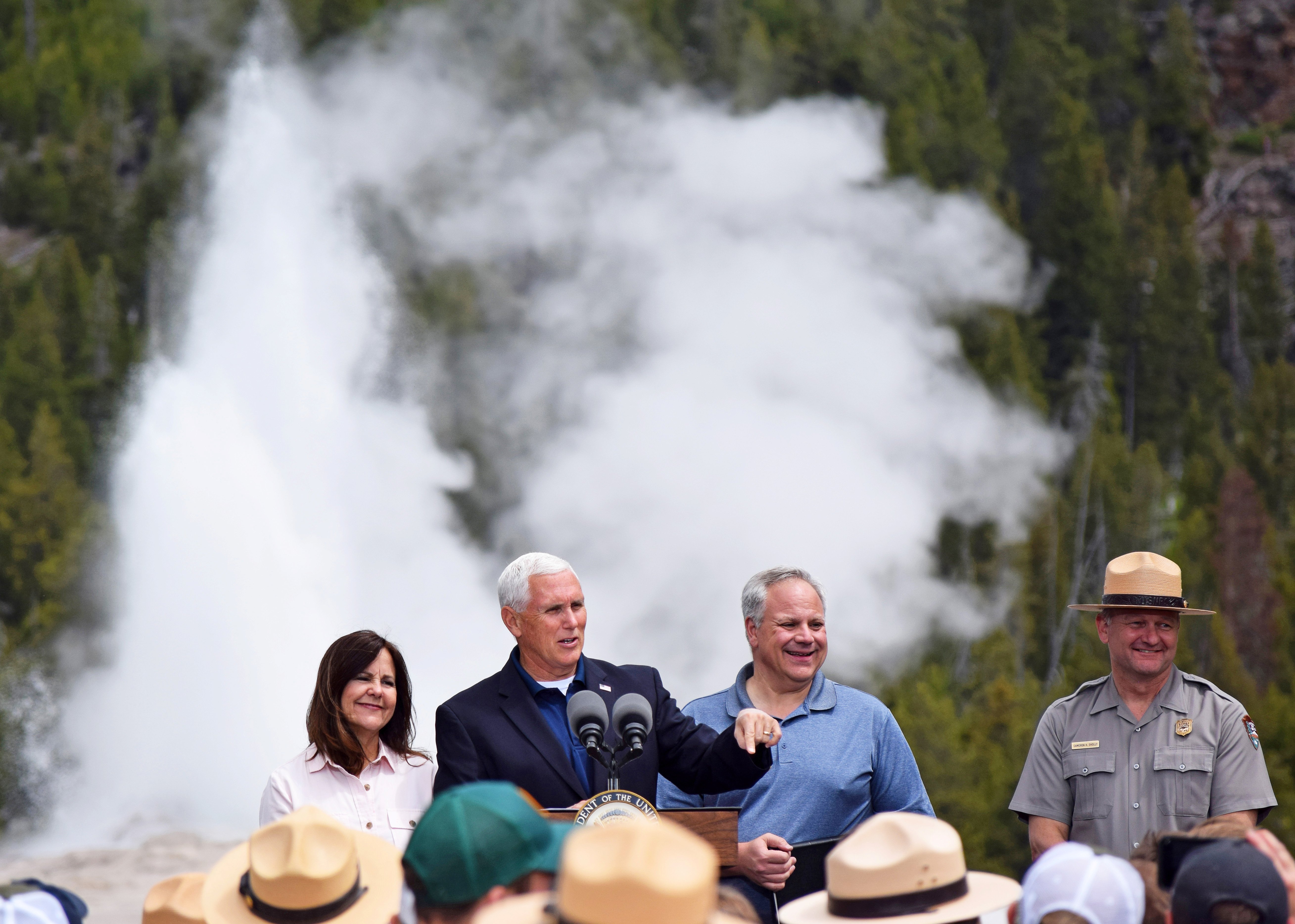
U.S. Vice President Mike Pence, flanked by wife Karen, Interior Secretary David Bernhardt and Yellowstone National Park Superintendent Cam Sholly, (R), speaks in front of Old Faithful Geyser in Yellowstone National Park in Wyoming, U.S. June 13, 2019. REUTERS/Ruffin Prevost.
Congress answered with legislation to create a $6.5 billion five-year fund to tackle the growing backlog. Bipartisan bills introduced in the House and Senate would divert unassigned energy royalties to fund park maintenance, up to $1.3 billion a year.
“Our parks are treasures, the perfect backdrop to a great love story,” Utah Rep. Rob Bishop, the ranking Republican on the House Committee on Natural Resources, said in February.
“This bipartisan bill will put us on the path to improving our parks for future generations,” Bishop said on introducing legislation aimed at reducing the maintenance backlog.
Senate legislation has 36 co-sponsors, and a similar House bill has more than 90 co-sponsors. Garder said NPCA supports the bipartisan bills, but Regan suggested new user fees could also eat away at the maintenance backlog.
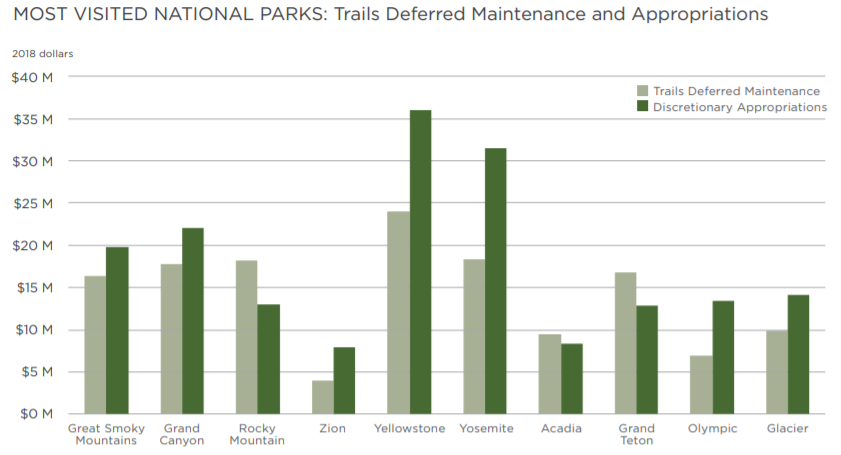
Source: Property and Environment Research Center
Regan said user fees would help parks move away from “unreliable appropriations from Congress” that often aren’t enough to even repair damaged and eroded hiking trails.
“That’s what’s known as the backpack tax. It’s an interesting idea,” Garder said. “Philanthropy, park entrance and other revenue sources are helpful, but ultimately what’s needed is a far more adequate federal investment.”
See more from Michael Bastasch and Daily Caller here
Free Range Report
Thank you for reading our latest report, but before you go…
Our loyalty is to the truth and to YOU, our readers!
We respect your reading experience, and have refrained from putting up a paywall and obnoxious advertisements, which means that we get by on small donations from people like you. We’re not asking for much, but any amount that you can give goes a long way to securing a better future for the people who make America great.
[paypal_donation_button]
For as little as $1 you can support Free Range Report, and it takes only a moment.
